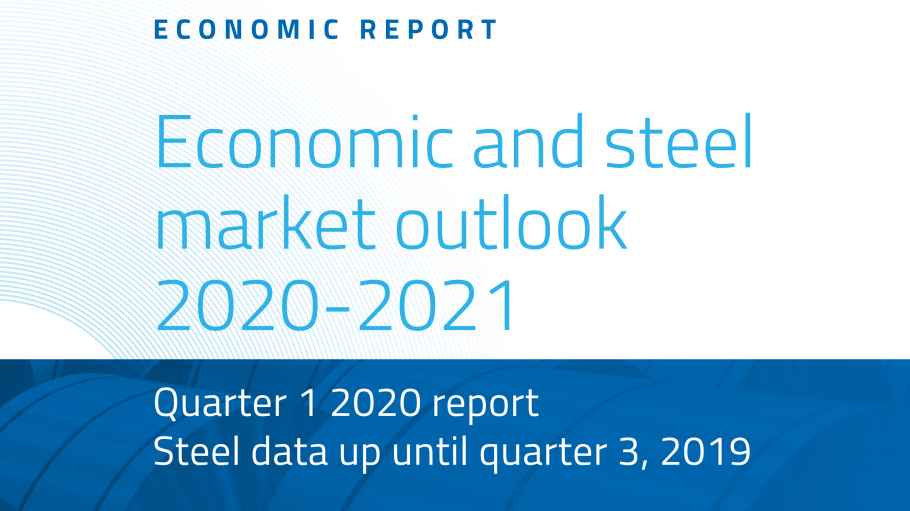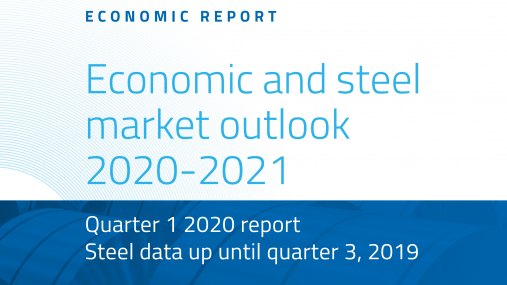
Publications » Economic and market outlook » Economic and steel market outlook 2020-2021, first quarter
Economic and steel market outlook 2020-2021, first quarter
Downloads and links
Recent updates

Apparent steel consumption fell by 3.1% year-on-year in the third quarter of 2019, a slight moderation compared to the drop recorded in the second quarter (-6.7%). The ongoing negative trend in steel demand is the result of the continued slump in EU’s manufacturing sector due to weakened exports and investment that has become more pronounced during the second and third quarter of 2019. Leading indicators suggest that the downturn continued in the remainder of 2019, albeit with some signs of stabilisation. No significant rebound is forecast before the second half of 2020.
The current downturn of the manufacturing sector in the EU is not likely to bottom out in the very short-term. Major risk factors are escalating trade wars between the US and several of its main trading partners (mostly China, despite the trade agreement signed on 15 January 2020 that has eased frictions) and persistent uncertainty regarding the final Brexit deal to be agreed by the end of 2020. These factors are set to weigh on trade conditions during 2020, and may even lead to a further deterioration in business sentiment and seriously
hamper investment growth. In this scenario, the EU steel sector would continue to be severely impacted, also having to cope with growing import distortions as well as persistently high import volatility as a result of the increase in the safeguard quotas and transfer mechanism of unused quarterly quota.

Brussels, 11 July 2025 – The delay and ongoing uncertainty about a deal on tariffs between the EU and the U.S. further worsens the crisis for the European steel industry. U.S. steel tariffs at 50% are adding fuel to an already explosive situation, putting the sector at risk of losing all its exports to the U.S. and facing a surge of deflected trade flows redirected from the U.S. to the EU market. The lack of bold and timely implementation of the Steel and Metals Action Plan is further accelerating the sector’s deterioration, says the European Steel Association.
Brussels, 02 July 2025 – The 90% climate target proposed today by the European Commission demands an unprecedented transformation of EU society and industry in just 15 years. The European steel industry is already doing its part, but a viable business case for the transition is still lacking. To enable it, the EU needs to implement the Steel and Metals Action Plan much more decisively, delivering a highly effective trade protection against global overcapacity, access to internationally competitive low carbon energy and scrap, and a watertight CBAM, says the European Steel Association.
How global overcapacity is destroying European industries